Daytime temperatures are starting to come down a little, migrating birds are heading through the area on their way south and fall fungi are appearing on the forest floor and fallen logs. Consequently a few of the 1001 Species crossed our paths in recent days - here are just a few. No gardening to write about this week, wildlife or otherwise, just some attractively seasonal things that caught my eye plus a bird with attitude that would probably also have like to actually catch my eye had I not had a reasonable distance and a long camera lens separating the two of us.
First, the bird. A very common bird, and one that was throwing it’s weight about a bit … well, what it was actually doing was coming in to land next to a couple of its mates but the camera can never lie so make of this what you will.
Common Grackle
We all know Grackles - very smart and rather handsome birds with their purply-blue shiny heads and beady eyes. I always feel happy in spring when they are one of the first birds to come back north. Any new face is a friend after a Montreal winter … but it doesn’t take long until they show their unsociable and thuggish approach to life at which point I become fairly happy to see the back of them. When they arrive at the feeders pretty well all the other birds vanish. Their song has been described as a “guttural squeak accompanied by high-pitched clear whistles” but in reality it’s worse than that.
And then some of the smaller fungi. I am always a little hesitant about identifying fungi to species level so the first three below are provisionally named while there is no doubt whatsoever about the fourth. All the more hesitant when iNaturalist’s specialist mycologists bounce back, ever so politely, and tell me I am wrong. As they do. Too often. I do know that I got the fourth of these specimens right though, and it’s a cracker.
Waxcap (Hydrocybe sp.)
The waxcap fungi are many, mostly quite small and almost all characterized by having a waxy or slimy surface. Their taxonomy is complex (look that up for yourselves) and DNA analysis has now shown that there are non-waxy members of the family which really confuse field identification. An expert on this group has described the difficulties of identification thus. Anyone who has had to prepare microscopic sections of plants for examination will immediately identify with the following.
Waxy caps are pretty boring under the microscope, but micro-features do need to be assessed in many cases in order to successfully identify species. Measuring spores and assessing their shapes is often sufficient--but searching for gelatinized hyphae is sometimes required in order to assess sliminess (see above). And, unfortunately, one of mushroom microscopy's more difficult routines is sometimes required, when the arrangement of the "lamellar trama" (the cells that make up the fleshy part of the gills) must be assessed. … creating a cross-section of a gill thin enough to actually view the cells clearly and decide how they are arranged is quite a challenge. A lot of patience and a very sharp razor blade are required. Good luck. I usually remember some urgent housecleaning or yard work I have to do, just when waxy cap sectioning gets ugly.
A Fungal “Bonnet”
Provisionally the Bleeding Fairy Helmet (Mycena haematopus) or a close relative
Usually found in forests on dead and decaying hardwood logs that are well decayed and without bark. They appear in dense clusters (though sometimes growing alone or scattered) causing a white rot. This group were in the nearby arboretum.
Entoloma sp.
A species of Entoloma, provisionally the Yellow Unicorn Entoloma (Entoloma murrayi). This tiny fungus has been described as “cute”. The particular specimen here emerged from the wood chips of a path in my own garden and, as you can see from the photo, artfully disported itself under the flowers of a wild aster. Getting down low to capture its likeness was not easy, at my age.
Devil's Dipstick (Mutinus elegans)
About this splendidly unique and unusual “lifeform” there is no dispute as to its identification. Growing in the garden of a friend who urged me to rush over and give it a name - and a very appropriate name it has, indeed. In fact it several alternative, equally appropriate common names including Demon Fingers, Dog Stinkhorn, Elegant Stinkhorn, and Headless Stinkhorn. It is described thus:
The 'horn' is the visible fruiting body of a network of mycelia that has been growing through the woody material, breaking it down and releasing nutrients to other plants. At some point, this network 'decides' it is time to reproduce and creates a white egg like structure that is partially above ground. It is from this structure that the pink to orange columnar fruiting body develops in just a few hours. The top of the structure is covered in a slimy, greenish brown mass of spores that smells of rotting meat or worse. The smell attracts insects which become covered in the slimy spores and deposit them away from the 'parent' mycelia. This is a very unusual occurrence within the fungus world. Most rely on wind to disperse their minute spores.
Naming Creatures Matters Because …
I know people sometimes wonder why I lean so heavily on the knowing of names for creatures … the following appeared in a book review yesterday morning and I think it covers the answer very well …
The British author Robert Macfarlane taught me that words are key to our ability to imagine our world and to embrace its possibilities. Mr. Macfarlane discovered that the Oxford Junior Dictionary had dropped words from nature – dandelion, willow, otter, newt – and replaced them with words from the realm of technology, such as blog, voice mail, attachment and broadband.
Mr. Macfarlane worried that if children no longer knew the exact word for these animals and plants, then the species themselves wouldn’t find a place in their imaginations. “To name something,” he told me in an interview, “is to know it a little better, to see it a little more clearly. And maybe to care for it a bit more.”
He wrote The Lost Words: A Spell Book as a lament for the endangered vernacular of the natural world. It’s a marvellous book with splendid illustrations - I know that you will enjoy it if you follow the link couple of lines above.
I am not including anything for the wildlife garden this week - these newsletters appear late morning on Sundays and this weekend I have been very busy giving a presentation and Q&A session on “An introduction to Birding” for the residents of our small town that was organised by the Council’s environmental advisory committee. This should have been followed by an open afternoon in our garden for anyone wanting to learn about transforming a boring lawn and flowerbeds into a place birds and bees and butterflies might enjoy gathering ... but heavens opened and that was called off. All this meant too little time.
And so, in lieu of my usual garden notes might I offer you first of all a bit of floral art that J put together from September flowers in the wildlife garden. This is followed by a link to a short piece written by a California based Substacker on about the importance of light in gardens at this time of year. It’s interesting if you are doing any garden planning.
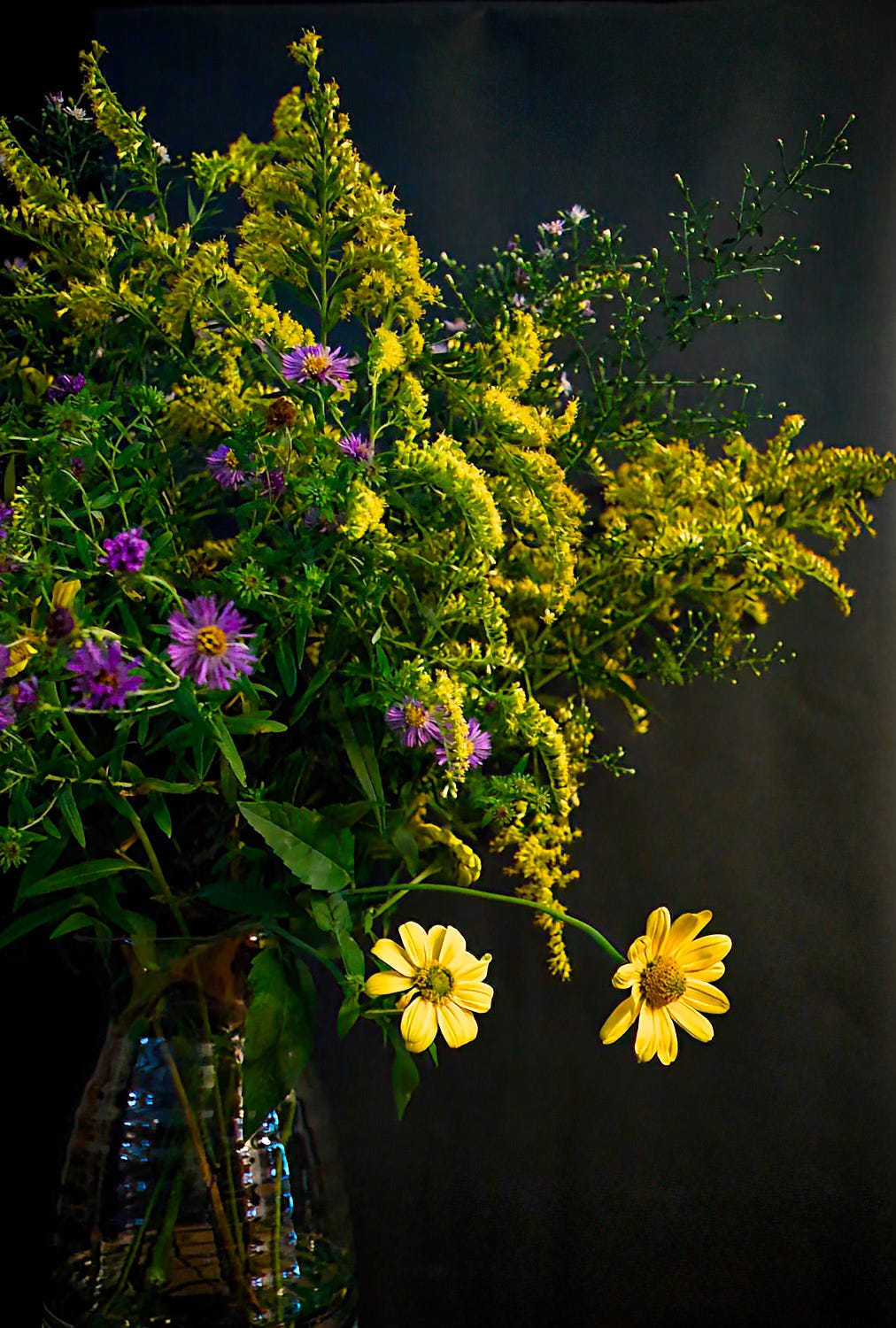




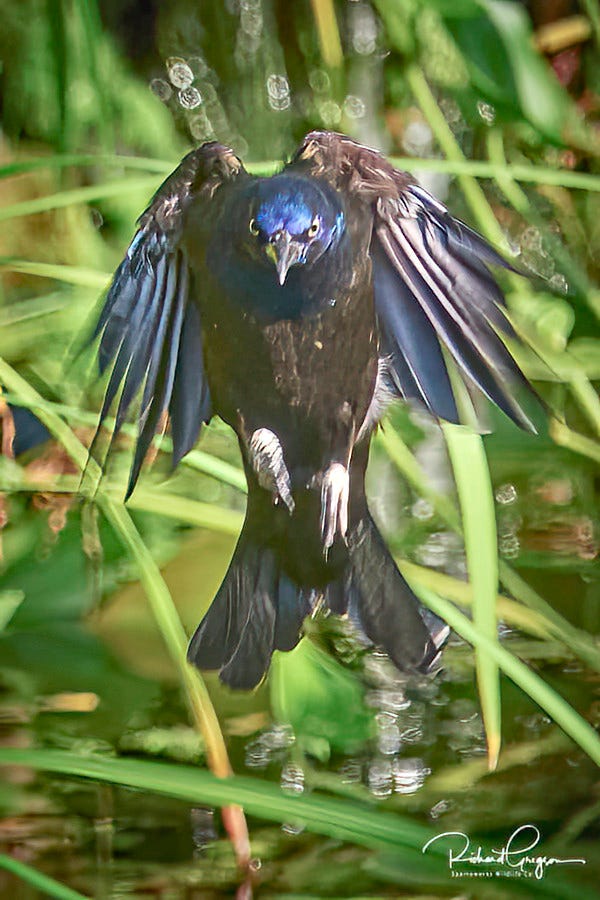
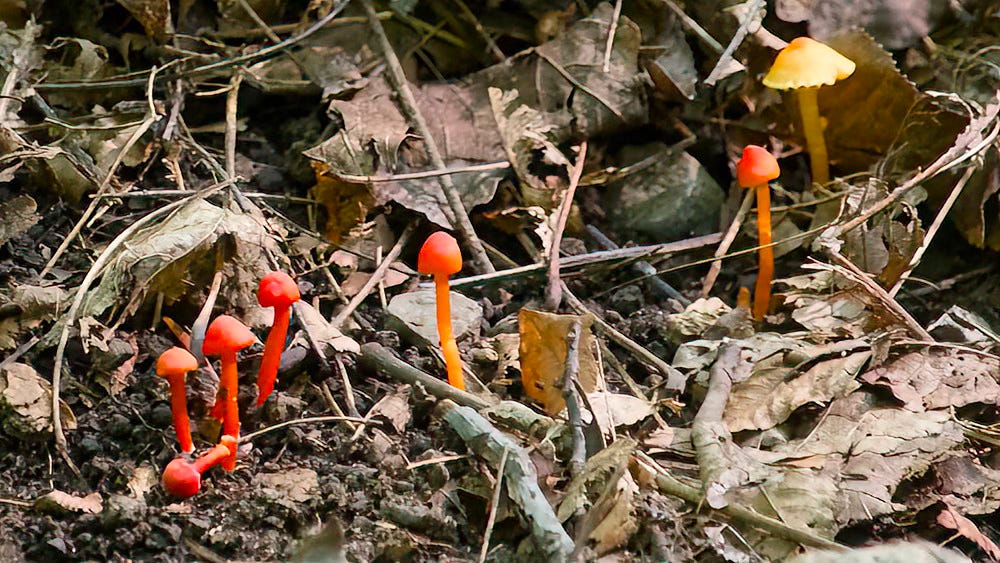
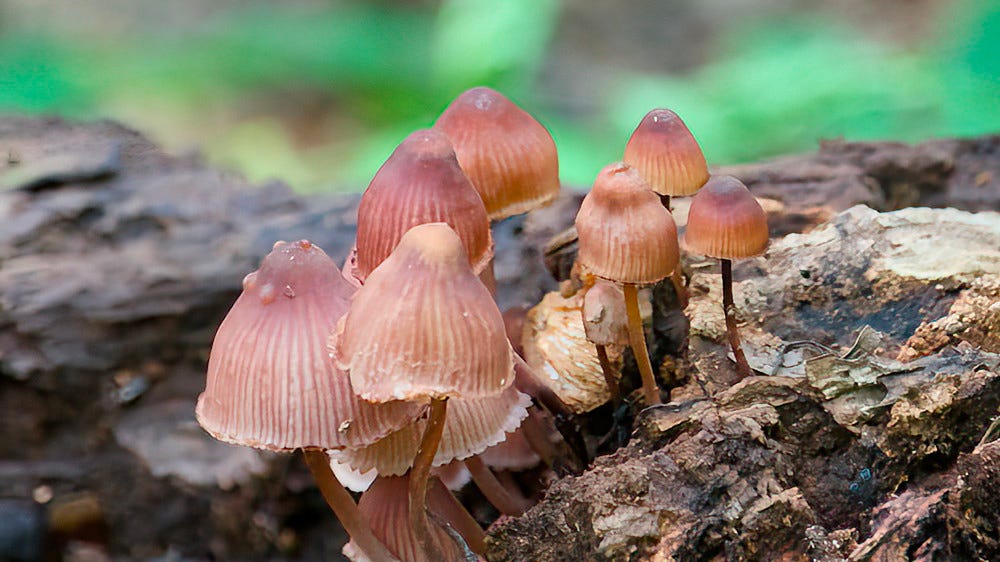
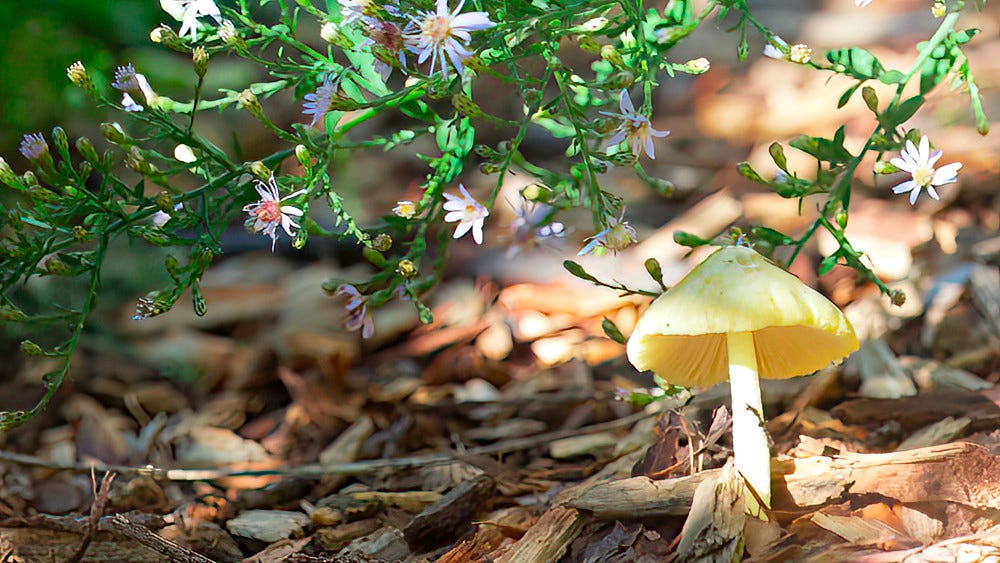
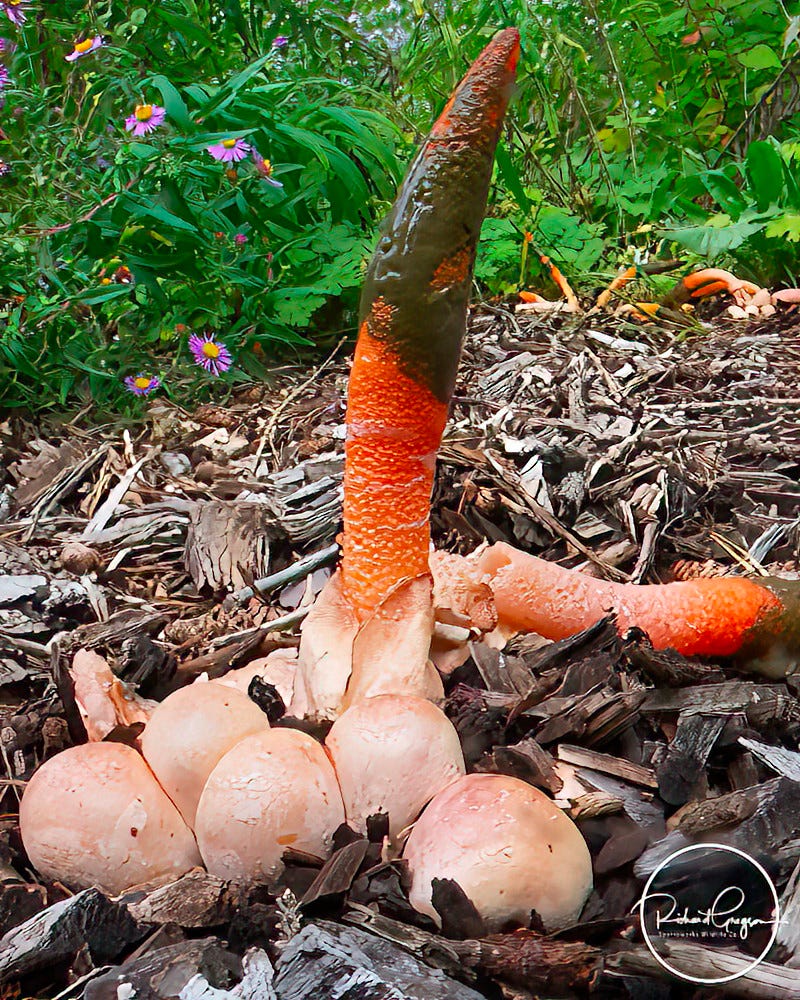




I really like that Robert Macfarlane quote. The Lost Words is such a great book, both the poems and Jackie Morris' illustrations.
Amazing picture of that grackle.